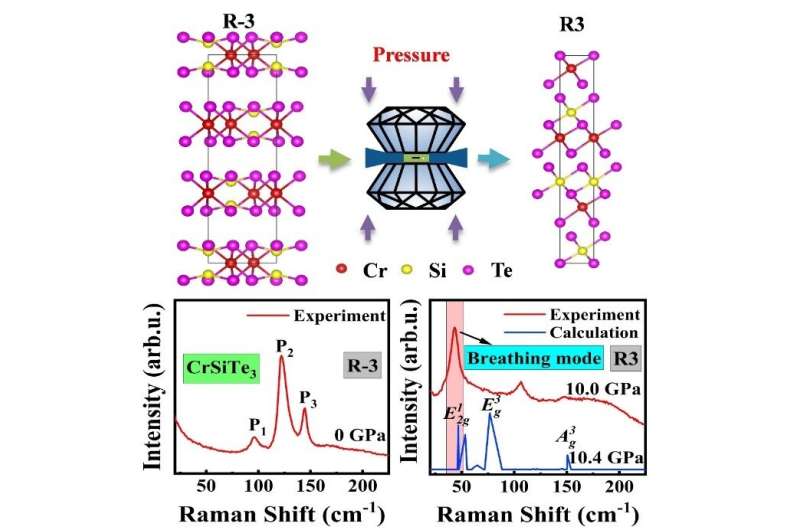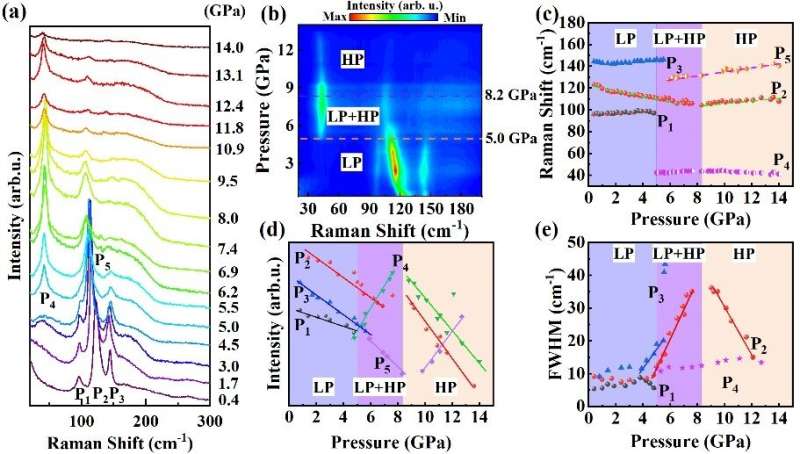This article has been reviewed according to Science X's editorial process and policies. Editors have highlighted the following attributes while ensuring the content's credibility:
fact-checked
peer-reviewed publication
proofread
High-pressure structure of a unique 2D ferromagnet clarified in recent study

According to research published in The Journal of Physical Chemistry Letters, Prof. Ding Junfeng from Institute of Solid State Physics (ISSP), Hefei Institutes of Physical Science, together with Prof. Wang Weihua from Nankai University, clarified the high-pressure structure of CrSiTe3, and highlighted the ultralow-frequency Raman spectroscopy when detecting the interlayer coupling on two-dimensional (2D) van der Waals materials.
2D magnetic materials have attracted significant attention owing to their highly tunable physical properties and potential applications in novel spintronics. Some of them can still exhibit intrinsic long-range magnetic order when they are exfoliated even into a few layers, such as ferromagnetic semiconductor CrSiTe3 with a centrosymmetric layered structure.
Both superconductivity and enhancement of ferromagnetism, usually competing for orders, have been observed in CrSiTe3 at high pressure. However, the high-pressure structure of CrSiTe3 is still unclear, setting obstacles in understanding pressure-induced novel physics.

In this research, after combining the Raman spectra and first-principles calculations, the joint team clarified the high-pressure structure of CrSiTe3.
"This was the first time that a new interlayer breathing mode located at ~42.1 cm-1 was observed in CrSiTe3," said Pan Xiaomei, first author of the paper.
The prominent changes in the Raman spectra suggested a phase transition from the R3̅ phase to the R3 phase accompanying noticeable enhancement of the Curie temperature at high pressure, which was supported by the theoretical analyses. The calculated phonon modes of R3 symmetry were in good accordance with the emerged Raman bands of CrSiTe3 at high pressure.
More information: Xiaomei Pan et al, Pressure-Induced Structural Phase Transition and Enhanced Interlayer Coupling in Two-Dimensional Ferromagnet CrSiTe3, The Journal of Physical Chemistry Letters (2023). DOI: 10.1021/acs.jpclett.3c00507
Journal information: Journal of Physical Chemistry Letters
Provided by Hefei Institutes of Physical Science, Chinese Academy of Sciences




















